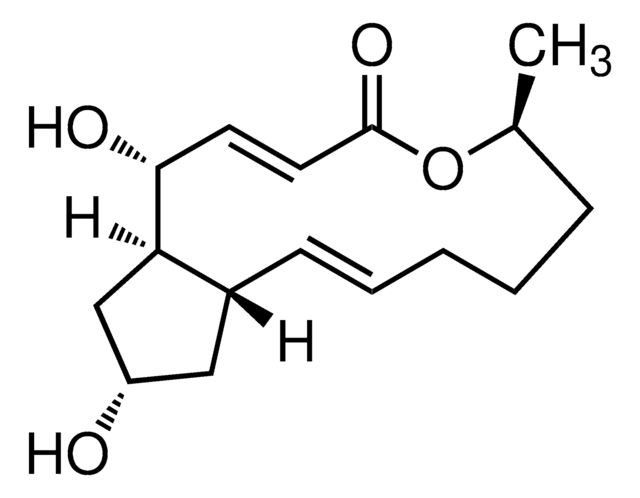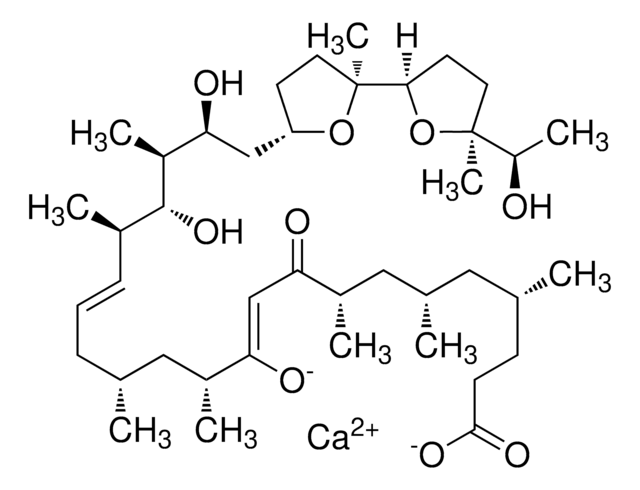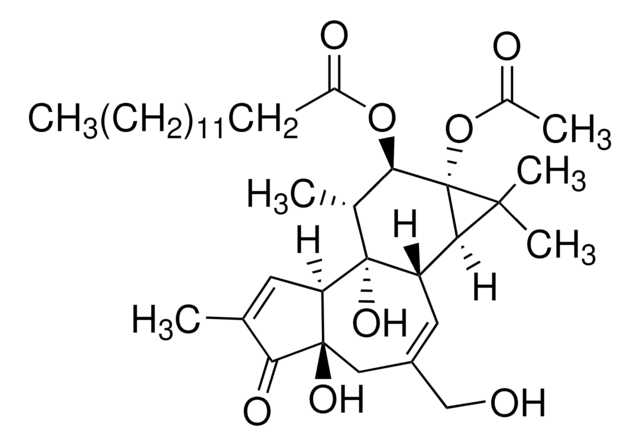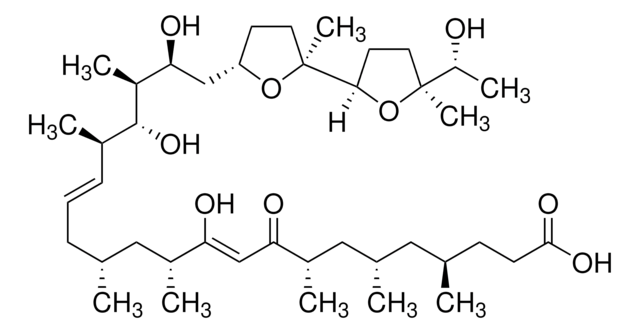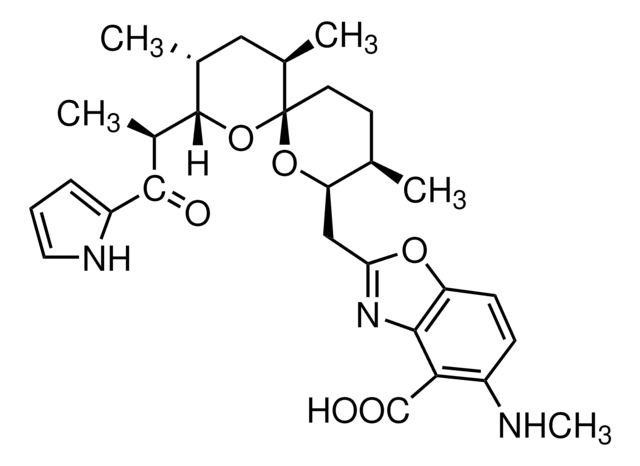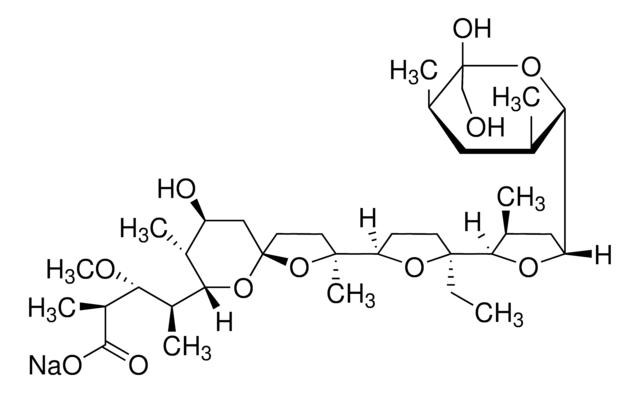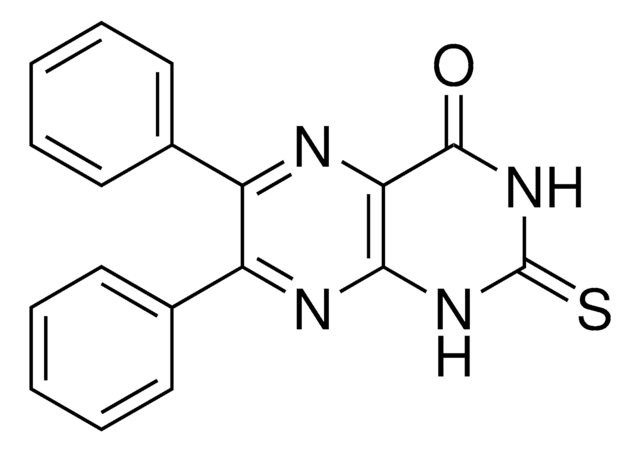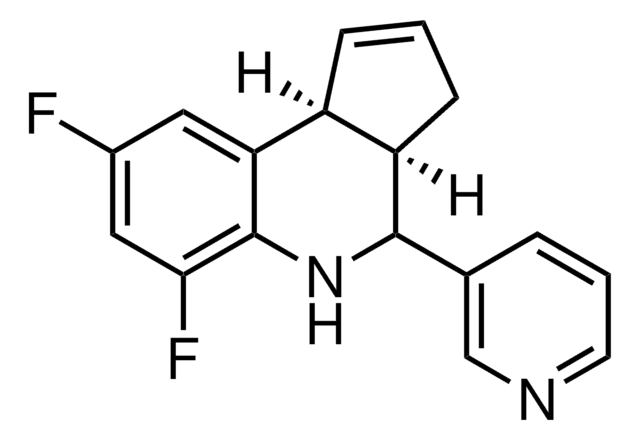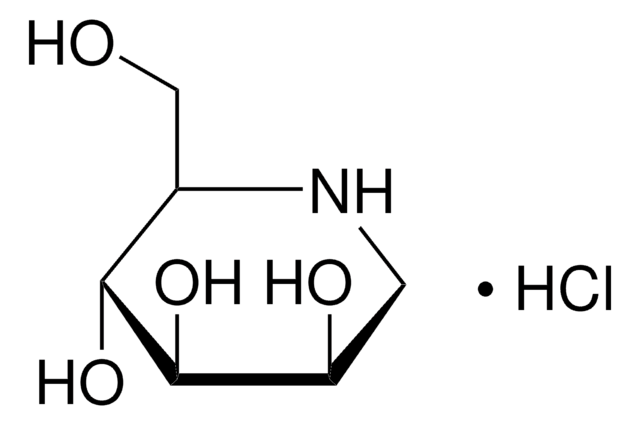B7651
Brefeldin A
from Penicillium brefeldianum, ≥99% (HPLC and TLC)
Synonym(s):
Nectrolide, γ,4-Dihydroxy-2-(6-hydroxy-1-heptenyl)-4-cyclopentanecrotonic acid λ-lactone, Ascotoxin, BFA, Cyanein, Decumbin
About This Item
Recommended Products
biological source
Penicillium brefeldianum
Quality Level
assay
≥99% (HPLC and TLC)
form
powder
solubility
DMSO: 10 mg/mL
antibiotic activity spectrum
neoplastics
mode of action
protein synthesis | interferes
storage temp.
2-8°C
SMILES string
C[C@H]1CCC\C=C\[C@@H]2C[C@H](O)C[C@H]2[C@H](O)\C=C\C(=O)O1
InChI
1S/C16H24O4/c1-11-5-3-2-4-6-12-9-13(17)10-14(12)15(18)7-8-16(19)20-11/h4,6-8,11-15,17-18H,2-3,5,9-10H2,1H3/b6-4+,8-7+/t11-,12+,13-,14+,15+/m0/s1
InChI key
KQNZDYYTLMIZCT-KQPMLPITSA-N
Looking for similar products? Visit Product Comparison Guide
General description
Application
- increase CRISPR genome editing efficiency.
- facilitate the measurement of cytokine production
- block intracellular transports in cell culture experiments
Biochem/physiol Actions
signalword
Danger
hcodes
pcodes
Hazard Classifications
Acute Tox. 3 Oral
Storage Class
6.1C - Combustible, acute toxic Cat.3 / toxic compounds or compounds which causing chronic effects
wgk_germany
WGK 3
flash_point_f
Not applicable
flash_point_c
Not applicable
ppe
dust mask type N95 (US), Eyeshields, Faceshields, Gloves
Certificates of Analysis (COA)
Search for Certificates of Analysis (COA) by entering the products Lot/Batch Number. Lot and Batch Numbers can be found on a product’s label following the words ‘Lot’ or ‘Batch’.
Already Own This Product?
Find documentation for the products that you have recently purchased in the Document Library.
Customers Also Viewed
Articles
The CRISPR-Cas9 system is an RNA-guided genome-editing tool that provides researchers a simple, easy, and quick way to modify the genomes of various organisms.
Our team of scientists has experience in all areas of research including Life Science, Material Science, Chemical Synthesis, Chromatography, Analytical and many others.
Contact Technical Service